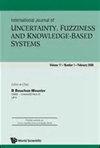基于极限学习机的稀缺指数数据集柴油机建模
IF 1
4区 计算机科学
Q4 COMPUTER SCIENCE, ARTIFICIAL INTELLIGENCE
International Journal of Uncertainty Fuzziness and Knowledge-Based Systems
Pub Date : 2013-10-31
DOI:10.1142/S0218488513400187
引用次数: 8
摘要
为了预测柴油机的性能,目前的实践依赖于使用黑盒识别,必须进行大量的实验,以获得用于模型训练的数值。基于人工神经网络(ann)的柴油机模型虽然已经有很多发展,但存在局部极小、用户选择最优网络结构负担大、训练数据量大、泛化性能差等缺点,难以实际应用。本文提出利用极限学习机(ELM)来模拟稀缺和指数样本数据集下柴油机的排放特性和制动油耗,该方法克服了上述缺点。将得到的ELM模型与使用流行的神经网络(如径向基函数神经网络(RBFNN))和先进技术(如支持向量机(SVM)及其变体,即最小二乘支持向量机(LS-SVM)和相关向量机(RVM))开发的模型进行比较。此外,柴油发动机的某些排放输出存在指数性问题(即输出y随输入x呈指数增长),这将降低预测精度。因此,采用对数变换对样本数据集进行预处理和后处理,以提高模型的预测精度。评价结果表明,无论模型精度和训练时间如何,经过对数变换的ELM均优于经过/不经过对数变换的SVM、LS-SVM、RVM和RBFNN。本文章由计算机程序翻译,如有差异,请以英文原文为准。
DIESEL ENGINE MODELLING USING EXTREME LEARNING MACHINE UNDER SCARCE AND EXPONENTIAL DATA SETS
To predict the performance of a diesel engine, current practice relies on the use of black-box identification where numerous experiments must be carried out in order to obtain numerical values for model training. Although many diesel engine models based on artificial neural networks (ANNs) have already been developed, they have many drawbacks such as local minima, user burden on selection of optimal network structure, large training data size and poor generalization performance, making themselves difficult to be put into practice. This paper proposes to use extreme learning machine (ELM), which can overcome most of the aforementioned drawbacks, to model the emission characteristics and the brake-specific fuel consumption of the diesel engine under scarce and exponential sample data sets. The resulting ELM model is compared with those developed using popular ANNs such as radial basis function neural network (RBFNN) and advanced techniques such as support vector machine (SVM) and its variants, namely least squares support vector machine (LS-SVM) and relevance vector machine (RVM). Furthermore, some emission outputs of diesel engines suffer from the problem of exponentiality (i.e., the output y grows up exponentially along input x) that will deteriorate the prediction accuracy. A logarithmic transformation is therefore applied to preprocess and post-process the sample data sets in order to improve the prediction accuracy of the model. Evaluation results show that ELM with the logarithmic transformation is better than SVM, LS-SVM, RVM and RBFNN with/without the logarithmic transformation, regardless the model accuracy and training time.
求助全文
通过发布文献求助,成功后即可免费获取论文全文。
去求助
来源期刊
CiteScore
2.70
自引率
0.00%
发文量
48
审稿时长
13.5 months
期刊介绍:
The International Journal of Uncertainty, Fuzziness and Knowledge-Based Systems is a forum for research on various methodologies for the management of imprecise, vague, uncertain or incomplete information. The aim of the journal is to promote theoretical or methodological works dealing with all kinds of methods to represent and manipulate imperfectly described pieces of knowledge, excluding results on pure mathematics or simple applications of existing theoretical results. It is published bimonthly, with worldwide distribution to researchers, engineers, decision-makers, and educators.

 求助内容:
求助内容: 应助结果提醒方式:
应助结果提醒方式:


